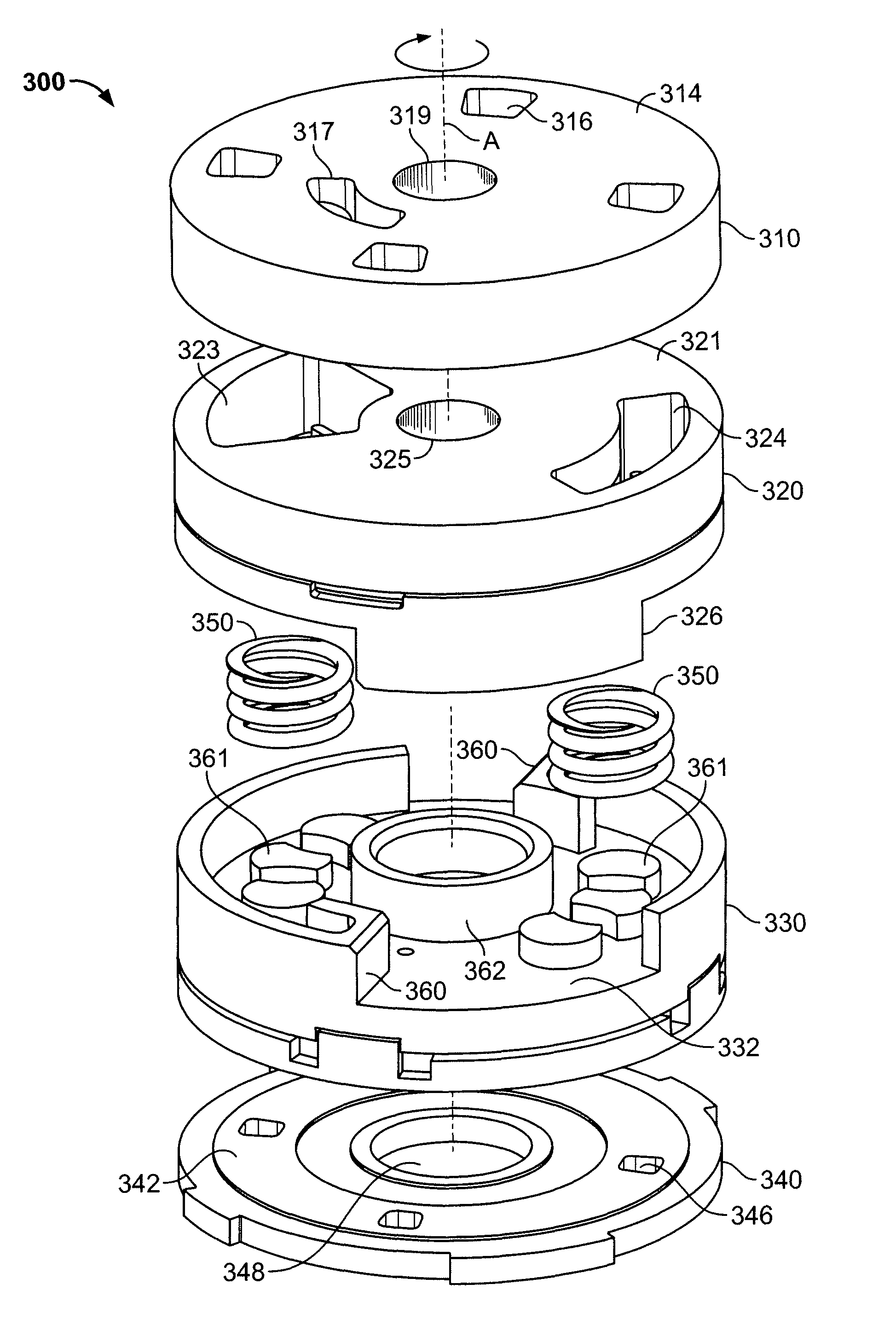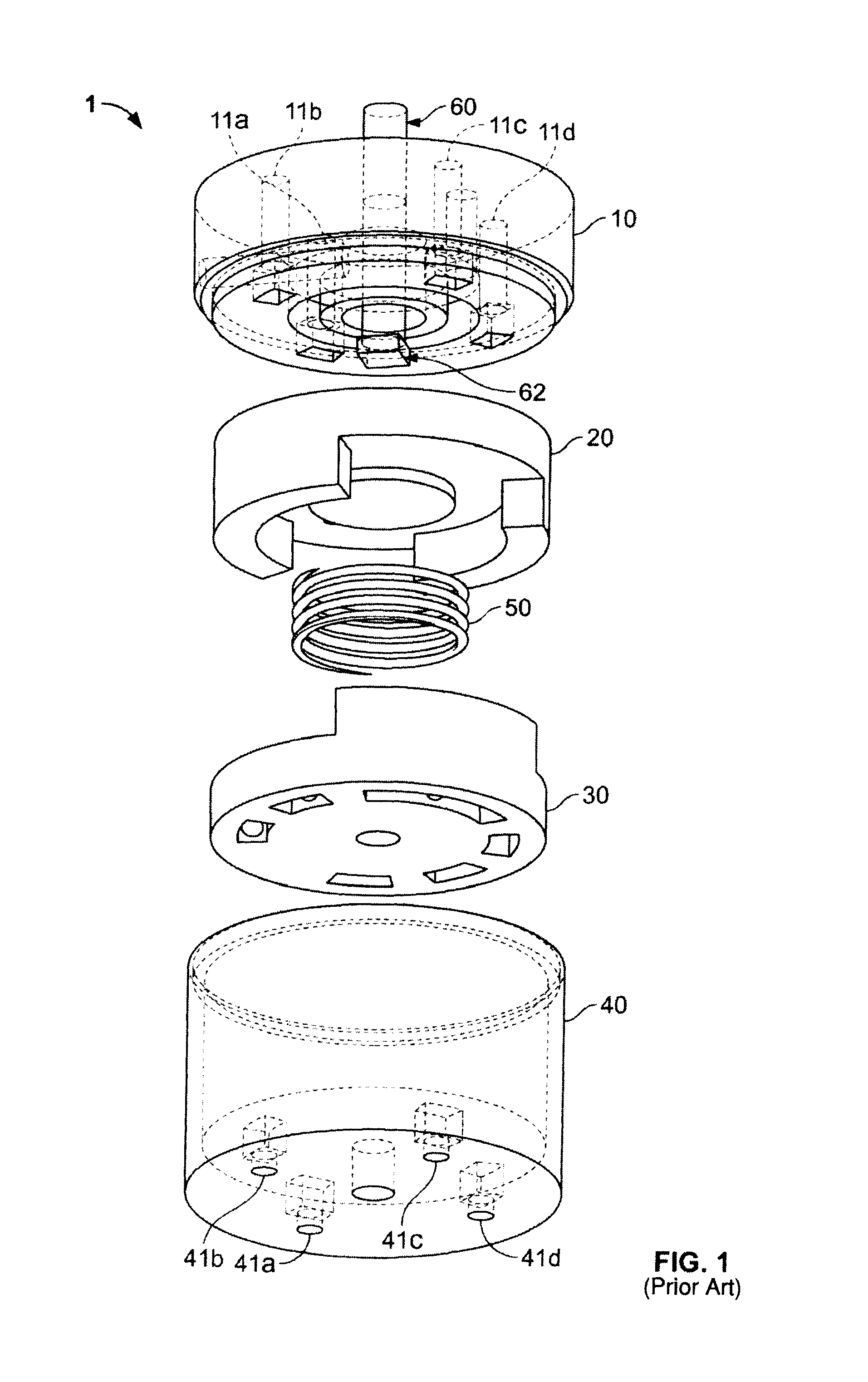Rotary valve
a technology of rotary valves and valve bodies, applied in the direction of valve operating means/release devices, water supply installation, separation processes, etc., can solve the problems of changing the shape of the surface, allowing leakage across the seal formed between the surface and various operating problems, etc., to reduce the amount of torque
- Summary
- Abstract
- Description
- Claims
- Application Information
AI Technical Summary
Benefits of technology
Problems solved by technology
Method used
Image
Examples
Embodiment Construction
[0046]The present invention now will be described more fully hereinafter with reference to the accompanying drawing, in which a preferred embodiment of the invention is shown. This invention may, however, be embodied in many different forms and should not be construed as limited to the embodiments set forth herein; rather, these embodiments are provided so that this disclosure will be thorough and complete and will fully convey the scope of the invention to those skilled in the art.
[0047]The exemplary embodiments of the present invention address the operation of a rotary valve that may be utilized in a pressure swing absorption (PSA) system operating in cycles by rotating a rotor within the rotary valve. The PSA systems include PSA systems having pressures that are super-atmospheric or sub-atmospheric or a combination of super- and sub-atmospheric. The exemplary embodiments of the invention provide for an improved rotary valve design and method of configuring a rotary valve that red...
PUM
 Login to View More
Login to View More Abstract
Description
Claims
Application Information
 Login to View More
Login to View More - R&D
- Intellectual Property
- Life Sciences
- Materials
- Tech Scout
- Unparalleled Data Quality
- Higher Quality Content
- 60% Fewer Hallucinations
Browse by: Latest US Patents, China's latest patents, Technical Efficacy Thesaurus, Application Domain, Technology Topic, Popular Technical Reports.
© 2025 PatSnap. All rights reserved.Legal|Privacy policy|Modern Slavery Act Transparency Statement|Sitemap|About US| Contact US: help@patsnap.com



